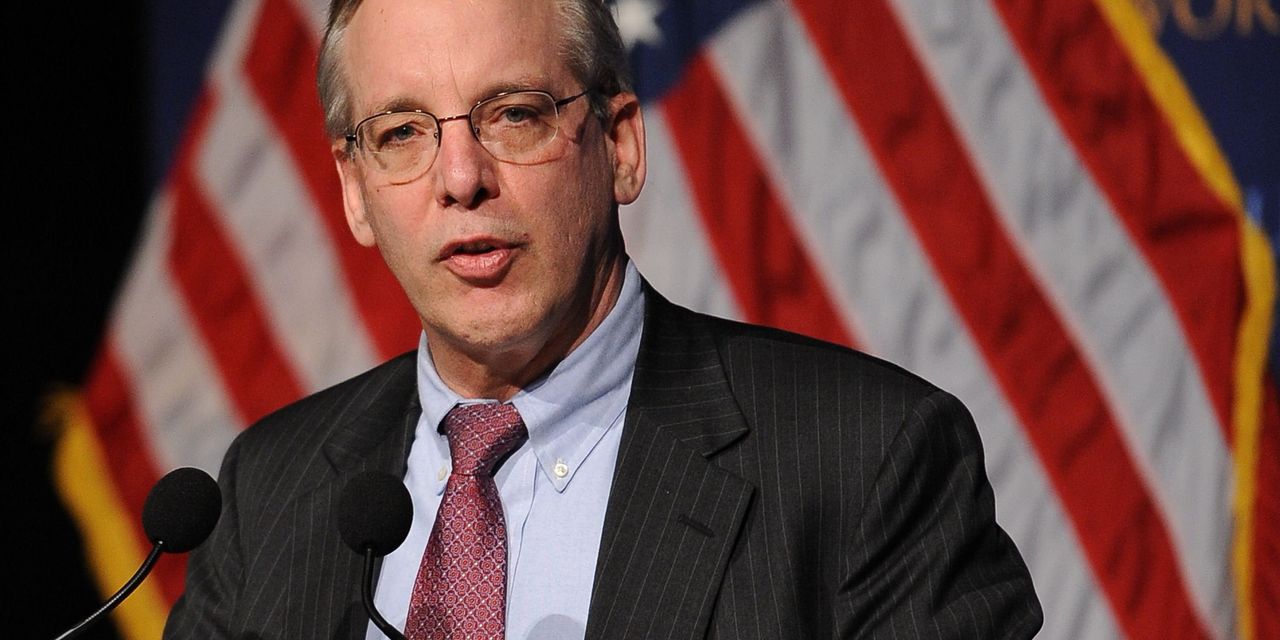
Key Words: ‘It’s not over,’ former NY Fed President Bill Dudley says about the rout in Treasurys
Stan Honda/Agence France-Presse/Getty Images‘I have what might be disconcerting news: It’s not over’Those are the words of former New York Federal Reserve President Bill Dudley weighing in on the recent rout in U.S. Treasurys, which picked up further steam on Thursday after data showed the economy and labor market remaining surprisingly strong despite the U.S. central bank’s string of rate hikes since March 2022.Investors aggressively sold off Treasurys on Thursday, leading to a broad-based spike in yields, after reports revealed the U.S. grew at a 2% annual rate in the first three months of the year and initial weekly jobless claims fell to a one-month low as of last week. Together, the data underscored that the Federal Reserve’s most aggressive interest rate hiking campaign since the 1980s hasn’t put as much of a dent in the economy as many had expected by now. Yields have risen sharply since 2020 and 2021 as the result of the Fed’s efforts to bring down inflation, starting last year — producing a swift and large decline in government-debt prices and creating stress at U.S. regional banks. In a Bloomberg column published before Thursday’s data, Dudley, head of the New York Fed from 2009 to 2018, said there are many reasons to expect the 10-year yield BX:TMUBMUSD10Y to move “considerably higher” than its narrow range near 3.75%. He estimates that the 10-year yield could go to 4.5%, assuming inflation averages 2.5%, a bond risk premium of 1 percentage point, and the Fed’s interest-rate target averages around 1% over the next decade on an inflation-adjusted basis. But Dudley calls this a conservative estimate because “all three elements could easily go higher,” considering inflation’s persistence and the U.S.’s “troubling” fiscal trajectory, among other things.A higher fed funds rates target may be needed to combat inflation and “will be necessary to balance demand for borrowing with a shrinking supply of savings,” at a time when baby boomers are spending down retirement accounts, the government is running large budget deficits, and vast capital investments are required in supply chains and environmentally-friendly technology, Dudley wrote. The fed funds rate target currently sits in a range between 5%-5.25%.“To some extent, this [a higher trajectory for rates] is what the Fed needs to happen, to slow the economy and get inflation under control,” he said. “That said, it’s been so long since long-term rates have reached such heights that further havoc is all but guaranteed. There’s just one possible silver lining: With any luck, a reawakened bond market might force U.S. politicians to finally get the country’s fiscal house in order. The sooner the better.” Higher yields pummel existing holders of government debt, while presenting new opportunities for potential buyers. On Thursday, the policy-sensitive 2-year rate BX:TMUBMUSD02Y and 10-year Treasury yield BX:TMUBMUSD05Y ended at their highest levels since March 9. Meanwhile, the 5-year yield on Treasury inflation-protected securities, a reflection of market expectations for inflation, rose to 2.004% as of 3 p.m. Eastern time, according to Tradeweb; that’s the highest level since mid-December of 2008, when the 5-year TIPS rate closed at 2.036%.U.S. stock indexes finished mostly higher, with Dow industrials DJIA up 0.8% and the S&P 500 gaining 0.5%. The Nasdaq Composite ended flat.
Market Pulse Stories are Rapid-fire, short news bursts on stocks and markets as they move. Visit MarketWatch.com for more information on this news.


